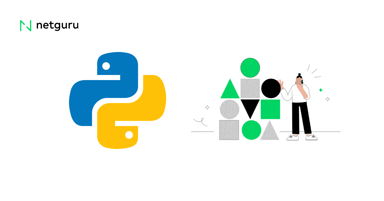Top 25 Back-End Web Development Tools

Backend development is about server-side software, focusing on everything that’s not visible on a website but is crucial for its performance and functioning. This includes managing databases, back-end logic, application programming interfaces (APIs), and the web servers themselves.
Why should you pay attention to backend development tools? Simply put, they are the backbone for everything that happens on the web. Whether you're at a startup or an enterprise-level organization, understanding the essential tools for backend development can be helpful.
Choosing the right back-end web development tools
Selecting the appropriate backend tools for
web development is like to choosing the right materials for constructing a building. It can either be future-proof and suitable for the ecosystem it's set in, or something that causes you trouble throughout the product lifecycle.
The back end is the backstage of your website, handling storage, database management, and other hidden but vital functions. Here's how to pick the right ones for your project:
1. Match tools to project requirements
No two projects are the same. Your choice of tools should align with your specific project’s needs. For instance, if scalability is a priority, Node.js might be your go-to option.
2. Programming language: the foundation
Backend development can be accomplished using a variety of programming languages like Java, Python, Ruby, and PHP. Each language offers its own set of advantages and disadvantages.
3. Framework: the blueprint
Frameworks are the templates that streamline the development process. Popular frameworks like .NET, Django, Spring, and Ruby on Rails offer varying features. Choose one that dovetails with your programming language and project requirements.
4. Be mindful of costs
Financial constraints are an important consideration. Tools can either be open-source or require a licensing fee. Make sure your chosen tools align with your budget.
5. Assess team preferences and expertise
Consider the preferences and expertise of your development team. A tool is only as good as the skills of the people wielding it. Ensure that your team has the know-how to utilize your chosen tools effectively, and enjoys working with the technology you choose.
Integrated development environment
An integrated development environment (IDE) is a software for building applications that combines common back-end developer tools into a single graphical user interface (GUI). IDEs are useful for consolidating all of the basic tools you need to write and test software in one place.
As the name implies, IDEs integrate several tools specifically designed for software development.
These tools usually include:
- An editor designed to handle code (with, for example, syntax highlighting and auto-completion)
- Build, execution, and debugging tools
- Some form of source control
IDEs help software developers code more efficiently, as they bring together tools for software editing, building, testing, and packaging. This will help boost the productivity of your team.
Let’s take a look at the different IDEs available for back end web development:
Jetbrains
JetBrains, founded in 2000 as IntelliJ Software, has grown from a Prague-based startup to a global authority in software development tools with over 10.1 million users worldwide. Known for IntelliJ IDEA, its flagship IDE, JetBrains offers an array of products like WebStorm, PyCharm, and JetBrains Space – a complete software development platform.
The company remains at the forefront of innovation with features like intelligent code completion, advanced refactoring, and seamless extensibility through plugins. Their IDEs are popular for popular programming languages such as Python, C, C++, Go, Swift and Ruby. JetBrains offers something for projects on any platform and any programming language.
VS Code (Microsoft)
Visual Studio Code, developed by Microsoft, is a versatile source-code editor that is a favorite for many software developers. Built on the Electron Framework, it's available for Windows, Linux, and macOS and offers an extensive range of features such as IntelliSense code completion, debugging, and syntax highlighting.
This editor is highly customizable, with options for themes, keyboard shortcuts, and extensions. Its architecture fuses the best of web and native technologies, making it a preferred choice for Node.js development in both JavaScript and TypeScript. Additionally, VS Code is open-source and free, adhering to an MIT license.
Vim
Originating as an enhanced clone of Bill Joy's vi, Vim has evolved into a text editor that is the epitome of power and customization. Vim's selling point is its highly extensible nature and unique commands and motions that can execute complex tasks with just a few keystrokes.
It's a ubiquitous choice for developers because of its availability across multiple platforms and its minimal memory footprint. Whether you're working on a high-end workstation or an older machine, Vim's efficiency is consistent. The active Vim community contributes a wealth of plugins and extensions, further enriching its functionality.
Sublime
Since its initial release in 2008, the shareware, cross-platform editor Sublime Text has garnered a following for good reasons: it's lightning-fast, stable, and packed with features. Engineered with C/C++ and Python, it offers a lightweight yet powerful environment tailored to developers of all skill levels. Its “Goto Anything” feature and rewritten auto-complete engine drastically simplify code navigation and writing, allowing for streamlined workflows.
It offers a Python API for developing plugins, making it customizable. Syntax highlighting, code folding, and terminal output are just a few more cherries on top. It's popular as a user-friendly code editor with a low learning curve for new developers.
Terminal
A terminal in web development is text-based and serves as the command-line interface (CLI) you can type your commands in. A shell takes these commands and tells the operating system to execute them.
Web developers spend a lot of time using terminals, so they need to be as functional and convenient as possible. Here are some of the best back-end development tools for a terminal.
Iterm2
iTerm2 is designed for power users who crave advanced features and high customization. With a taggable and searchable profile database, it streamlines session management. You can partition your screen into multiple panes to run different sessions simultaneously, and jump back to the terminal from any application with a registered hotkey.
Its robust find-on-page feature, keyboard-friendly text selection, and paste history functionality enhance text navigation and manipulation. It's integrated with the Unix shell, enabling perks like tracking your command history, notifying you when long-running jobs finish, and facilitating drag-and-drop uploads on remote hosts.
Oh My Zsh
Oh My Zsh offers a variety of enhancements designed for power users. What sets it apart is its community-driven ethos, with contributors adding value through hundreds of plugins, from git to zsh-syntax-highlighting, that are easy to install via curl or wget.
Oh My Zsh also boosts productivity with clever commands like 'take', which lets you create and switch to a new directory in a single step.
Fish
Fish is a Unix shell with a focus on interactivity and usability. What makes Fish a standout is its relentless focus on interactive features and hassle-free setup. It's designed to give the user features by default, rather than by configuration, meaning convenience for web developers.
The autocomplete function acts like a seasoned assistant, recalling your past commands to speed up your workflow. While Fish doesn't strictly adhere to POSIX standards, making it an 'exotic' choice, it compensates with an interface that's as user-friendly as it is intelligent.
Version Control
Version control software is essential to help developers manage changes, organize revisions, and collaborate effectively with team members. It keeps track of any modifications made to code in a database. If mistakes are made, developers can use this software to compare versions of the code to identify how to fix the mistake. This allows changes to be made without impacting team members.
Here are some of the most popular version control software tools:
Git
Born out of Linus Torvalds' vision in 2005, Git today is more than a version control system, it's a facilitator of modern software development.
At its heart, Git is a distributed version control system designed for tracking changes and fostering collaboration among developers. It's also a layered file system and key-value data store in itself. This architectural choice makes Git exceedingly fast and reliable, thanks in part to its C-language backbone.
Git's 'commit' feature creates a ledger of incremental changes rather than a full snapshot of files. This makes Git both efficient and thorough, offering a high degree of source code integrity. While the basic commands like "commit," "push," and "pull" keep the Git world turning, the platform supports a range of complex, non-linear workflows, accommodating the unique needs and structures of various development teams.
The advantages of Git are hard to ignore: faster release cycles, simplified collaboration, and widespread industry acceptance.
GitHub
A web-based repository that helps with code management and sharing local file changes with a remote repository. GitHub is primarily used as a hosting platform for Git repositories.
GitLab
Again, this is a web-based repository with multiple tools available for version control and overall DevOps. GitLab provides a comprehensive version control solution to deliver better software faster in a single platform, simplifying how to implement version control
BitBucket
Bitbucket is a Git-based source code repository hosting service owned by Atlassian. Bitbucket offers both commercial plans and free accounts with an unlimited number of private repositories. Bitbucket supports distributed version control and makes it easy for developers to collaborate on code.
Containerization and orchestration
Containerization is the packaging together of software code with all its necessary components, like libraries, frameworks, and other dependencies so that they are isolated in their own "container." Orchestration is the management of the different containers used during back-end web development.
Container orchestration is the automation of the deployment, management, scaling, and networking of containers. Developers need specific tools to orchestrate containers effectively and keep projects organized and streamlined.
Here are some of the best tools for container orchestration in back-end web development.
Docker
Docker is a platform-as-a-service product that uses OS-level virtualization to create containers. It's the most popular containerization tool, with its official repository, Docker Hub, being the world's most used container registry. With Docker, you can treat containers like extremely lightweight, modular virtual machines.
It's very flexible – you can create, deploy, copy, and move them from environment to environment – which helps developers move seamlessly and optimizes apps and websites for the cloud. Containers in Docker are isolated, bundling their own software and configuration, yet they can communicate with each other. This makes applications infrastructure-agnostic, simplifying deployment.
Podman
Podman (the POD manager) is an open-source tool for developing, managing, and running containers on Linux® systems. It's considered light and faster than many other containerization tools, and there are no licensing fees. Podman also allows for non-root privileges for containers, which are considered safer than containers with root privileges, eliminating a system-wide failure point.
It's fully compatible with Docker, both in command-line interface and REST API, which makes transitioning to Podman straightforward. Unlike Docker, it operates without a daemon, using a fork-exec model for running containers.
Kubernetes
Kubernetes is an open-source container orchestration platform that helps manage distributed, containerized applications at massive scale. You tell Kubernetes where you want your software to run, and the platform takes care of almost everything it takes to deploy and manage your containers. Kubernetes is popular because it allows high workflow portability, flexibility, and lack of fragmentation.
Designed for high scalability, it can manage thousands of containers across multiple hosts and is adopted by tech giants like Google and IBM. It's an open-source project with robust community engagement. While complex, it can run on a single machine for development testing. A key player in multi-cloud strategies, Kubernetes is predominantly hosted on AWS, followed by Azure and Google Cloud Platform.
API/Web testing tools
An application programming interface (API) is a way for two or more computer programs to communicate with each other. It is important to test these endpoints to ensure functionality and seamless interfacing with other parts of the back-end web development.
API/Web testing tools typically analyze an application program interface (API) to verify it fulfills its expected functionality, security, performance and reliability. The tests can be performed directly on the API or as part of integration testing.
API testing is important because it makes sure that your API performs as expected when faced with a broad range of expected and unexpected requests. The process is designed to test the API's functionality, as well as its reliability, performance, and security.
Here are some of the best API/web testing tools available to back-end web developers:
Postman
Postman is an API platform for building and using APIs. Postman simplifies each step of the API lifecycle and streamlines collaboration to make the development of APIs faster. It is very popular, being used by over 20 million developers. It has a simple, user-friendly interface, allows developers to create different testing environments and boasts a wide range of functionalities.
Curl
Curl is an open-source command line tool and library for transferring data and URLs. It communicates with a web or application server by specifying a relevant URL and the data that need to be sent or received. curl is powered by libcurl, a portable client-side URL transfer library. cURL supports multiple protocols, including HTTP and HTTPS, and runs on almost every platform. This makes it ideal for testing communication from almost any device from a local server to most edge devices.
Selenium
Selenium offers tools and libraries for browser automation. At the core of Selenium is Selenium WebDriver, an interface to write instructions that work interchangeably across browsers. It is popular because it enables rapid, repeatable web-app testing, which allows developers to deploy new releases faster and with confidence.
SQL Clients
A structured query language (SQL) client connection is software that provides this type of connectivity. SQL client software is most commonly used in Microsoft programming languages. This connection technology is specifically designed to transmit data over the Internet to an external database. SQL Clients are crucial database administration tools. A good SQL client enables developers to easily and accurately manage or maintain their databases during back-end web development.
Here’s a list of the most popular SQL Client softwares available:
DBeaver
DBeaver is a cross-platform and open source SQL client software application and a database administration tool. DBeaver is popular as it is free, simple to use and platform independent. It offers a wide range of DBMS support, easy movement of data between databases, automatic driver download and Import-Export data.
pgAdmin
pgAdmin is an open-source graphical user interface (GUI) administration tool for PostgreSQL. It can be used on Linux, Unix, macOS and Windows to manage PostgreSQL and EDB Advanced Server 10 and above. It is popular because anybody can use it, anywhere. You can configure it to run on any cloud server and then access it from all of the major operating systems. It is very feature rich and flexible.
DataGrip (JetBrains)
DataGrip is a powerful database management environment from JetBrains for SQL on macOS, Windows, and Linux. It is designed to query, create, and manage databases. Databases can work locally, on a server, or in the cloud. DataGrip provides smart code completion, code inspections, on-the-fly error highlighting, quick-fixes, and refactoring capabilities. It saves you time by making the process of writing SQL code more efficient.
DbVisualiser
DbVisualizer is a universal database tool for administrators, developers, and analysts. It runs on all major OSes and connects to all commercially viable database engines. This makes it extremely accessible for back-end web developers working on almost any project.
Organization and communication
Any back-end web development project doesn’t just require coding and testing tools. Development teams also need to be able to communicate with each other, and to plan and organize different parts of the development.
That’s why team collaboration platforms are very important to back-end web development. Here are some of the best tools for doing that:
Slack
Slack is popular messaging platform for work teams. It allows you to create different project channels and subject-based messaging boards, as well as sharing important documents securely. By bringing people together to work as one unified team, Slack transforms the way organizations communicate.
Jira
Jira is a bug-tracking, issue-tracking and project-management software application. It allows for very efficient, customizable workflow management and enables teams to communicate effectively with each other and with clients. It’s also popular for its clear and transparent reporting function, intuitive dashboard and extensive integration capability.
Trello
Trello is a web-based, Kanban-style, list-making application. Trello is a popular platform for managing and collaborating on back-end development projects with team members. Visually, Trello's Kanban boards are great for clear, simple organization, allowing lots of detail on each card, and they let you team members who's working on what, at any given time.
GitHub Issues
GitHub Issues offers project planning for developers. Some of its functionalities include creating issues, breaking them into tasks, tracking relationships, adding custom fields, and having conversations. Developers can use it to visualize large projects as spreadsheets or boards, and automate everything with code.
Getting ready for successful back-end web development
There are many different tools for each aspect of back-end web development, from IDEs to project management software. It’s important to note that this means your team will need a number of different tools throughout your web development project. Some will help with coding, others with testing, and some with data management and transmission.
Some of these tools have very similar functionalities or do the same thing. Which one you choose will depend on personal preferences, but also on your project and team requirements. Anything from your overall budget to the level of developer expertise should be considered when choosing which back-end web development tools to use.
Web development is more accessible than ever before because of the availability of these tools. If you’re ready to get started with your back-end web development now, but unsure which tools to use, speak to one of our friendly Netguru experts today - we’d love to help!




















